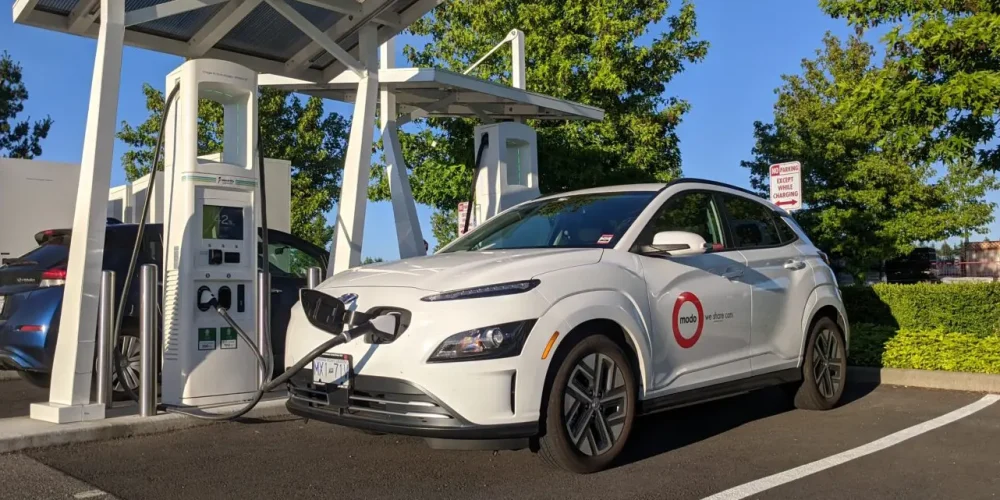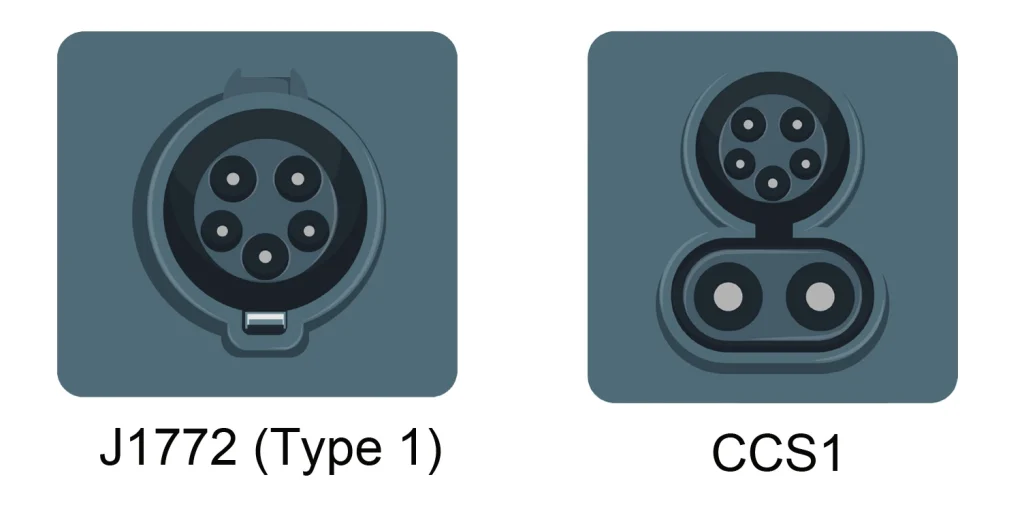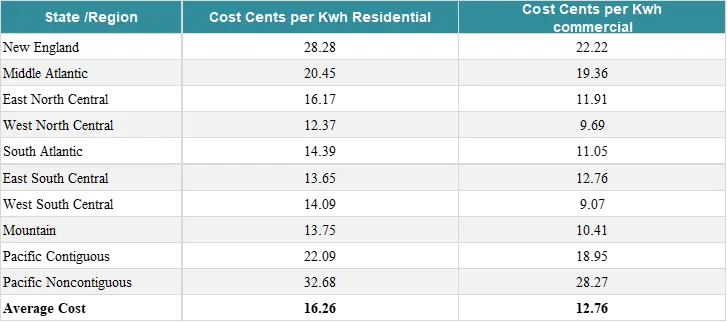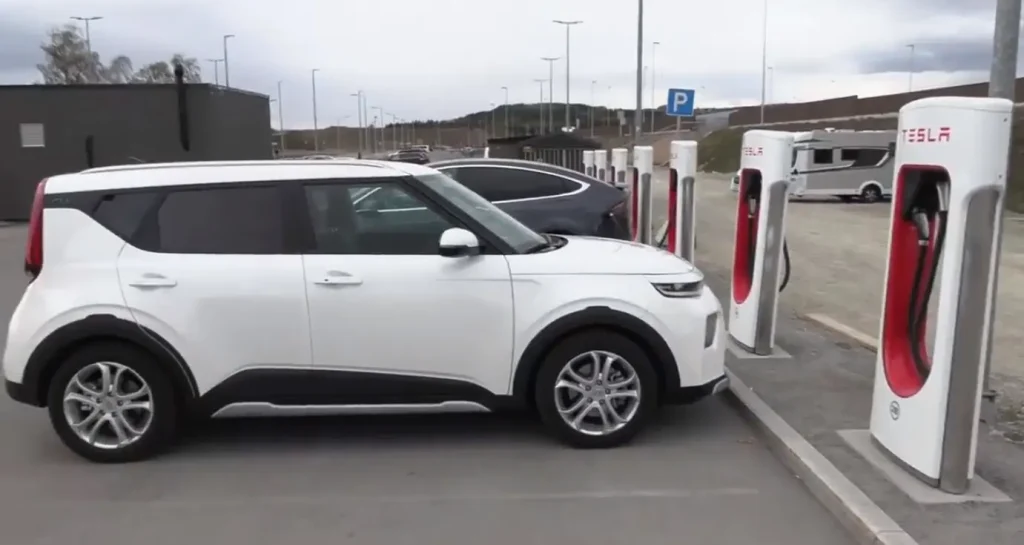
Hyundai Kona Charging Explanation: Methods, Costs, and Charging Time, Supercharger Compatibility
The 2025 Hyundai Kona Electric is a practical and efficient EV designed for both urban commuting and long-distance travel. With multiple trim levels, including SE, SEL, N Line, and Limited, the Kona Electric provides flexibility in range and charging speeds. Understanding how to charge Hyundai Kona is key to maximizing convenience and efficiency. This guide covers Hyundai Kona charging options, home charging setups, charging times, costs, and Tesla Supercharger compatibility.
Hyundai Kona Charging Specifications
The 2025 Hyundai Kona Electric offers two battery size options, each with different range estimates and charging capabilities:

- Battery Capacity:
- SE: 48.6 kWh
- SEL, N Line, Limited: 64.8 kWh
- Maximum AC Charging Power: 11 kW (Level 2 charging)
- Maximum DC Fast Charging Power: 100 kW (public charging stations)
- Estimated Range: 200 – 269 miles, depending on trim level

Hyundai Kona Charging Time by Charger Type
Since the Hyundai Kona charging time might be different due to the battery size, weather condition, charger power output, the following calculation is based on the electricity consumption level disclosed and under ideal condition.
Level 1 Charging (120V Standard Home Outlet)
Using a standard 120V home outlet, Level 1 charging is the slowest option, typically suitable for overnight top-ups or emergency charging.

- Charging Speed: 5 – 6 miles of range per hour
- Full Charge Time (10%-80%): 22 – 30 hours, depending on the battery size
Level 2 Charging (240V Home & Public Chargers)
Level 2 charging is the best option for home charging, drastically reducing charging time.

- Charging Power: 7 kW – 11 kW
- Charging Speed: 12 – 38 miles of range per hour
- Full Charge Time (10%-80%): 3 – 7 hours, depending on the charger’s amperage and battery size
A 40A – 48A Level 2 charger is recommended for the fastest home charging speeds.
DC Fast Charging (100 kW Public Charging Stations)
DC fast charging is ideal for long-distance travel, allowing rapid top-ups.

- Charging Speed: Up to 100 kW
- Charge Time (10%-80%): 34 – 45 minutes, depending on conditions
Choosing the Best Home Charger for Hyundai Kona Charging
For a reliable home charging setup, consider the following:
- Power Output: The Kona Electric supports up to 11 kW AC charging, so a 40A – 48A Level 2 charger will offer the fastest home charging speeds.
- Installation Considerations: Higher-powered chargers may require electrical panel upgrades. A 32A or 40A charger is a good balance between cost and performance.
- Hardwired vs. Plug-In: Hardwired chargers provide greater durability and stability than plug-in options.
- Smart Charging Features: Some Level 2 chargers come with Wi-Fi connectivity and mobile app control for monitoring and scheduling charges.
Hyundai Kona Charging Costs
The average household electricity cost accross different state in the US is around $0.162/kWh, and the average commercial electricity cost is approximately $0.127/kWh. Though the Commercial electricity is even cheaper than the household electricity, the charging cost from DC fast Charging station is much higher than by home charging electricity, amost doule price.

Home Charging Costs
Charging at home is the most cost-effective method. Based on an average electricity rate of $0.162 per kWh:

- Cost per 100 miles: $4.70 – $5.02, depending on trim level
- Full Charge Cost: $7.87 – $10.50
Public Charging Costs
Public DC fast charging is convenient but more expensive than home charging.

- Cost per kWh: $0.30 – $0.50, depending on the provider
- Cost per 100 miles: $10.15 – $10.85, varying by location
- Full Charge Cost: $17.01 – $22.68
Can the Hyundai Kona Electric Use Tesla Superchargers?

Yes! The 2025 Hyundai Kona Electric can access select Tesla Superchargers that support CCS compatibility via Magic Dock.
Upcoming NACS to CCS Adapter Support
- Though till late March 2025 there is no leads show that Hyundai Kona adopt NACS charging port, Hyundai has announced that starting in 2025, the Kona Electric will gain access to a wider Tesla Supercharger network via an official NACS to CCS adapter.
- Future Hyundai models may include native NACS charging ports, eliminating the need for an adapter, according to the announcement from Hyundai that it plans to adopt the North American Charging Standard (NACS).
Conclusion
The 2025 Hyundai Kona Electric offers flexible charging solutions that fit the needs of both daily commuters and long-distance travelers. While Level 1 charging is slow, a Level 2 home charger provides the best balance of speed and cost-effectiveness. DC fast charging is ideal for road trips, and Tesla Supercharger access expands public charging options. Investing in the right home charging setup will ensure maximum convenience and efficiency, making the Hyundai Kona Electric an excellent choice for EV drivers.
